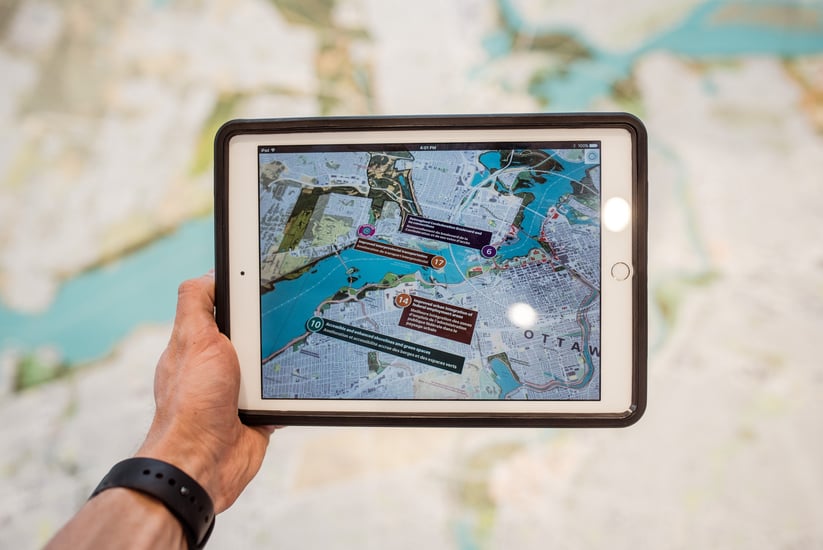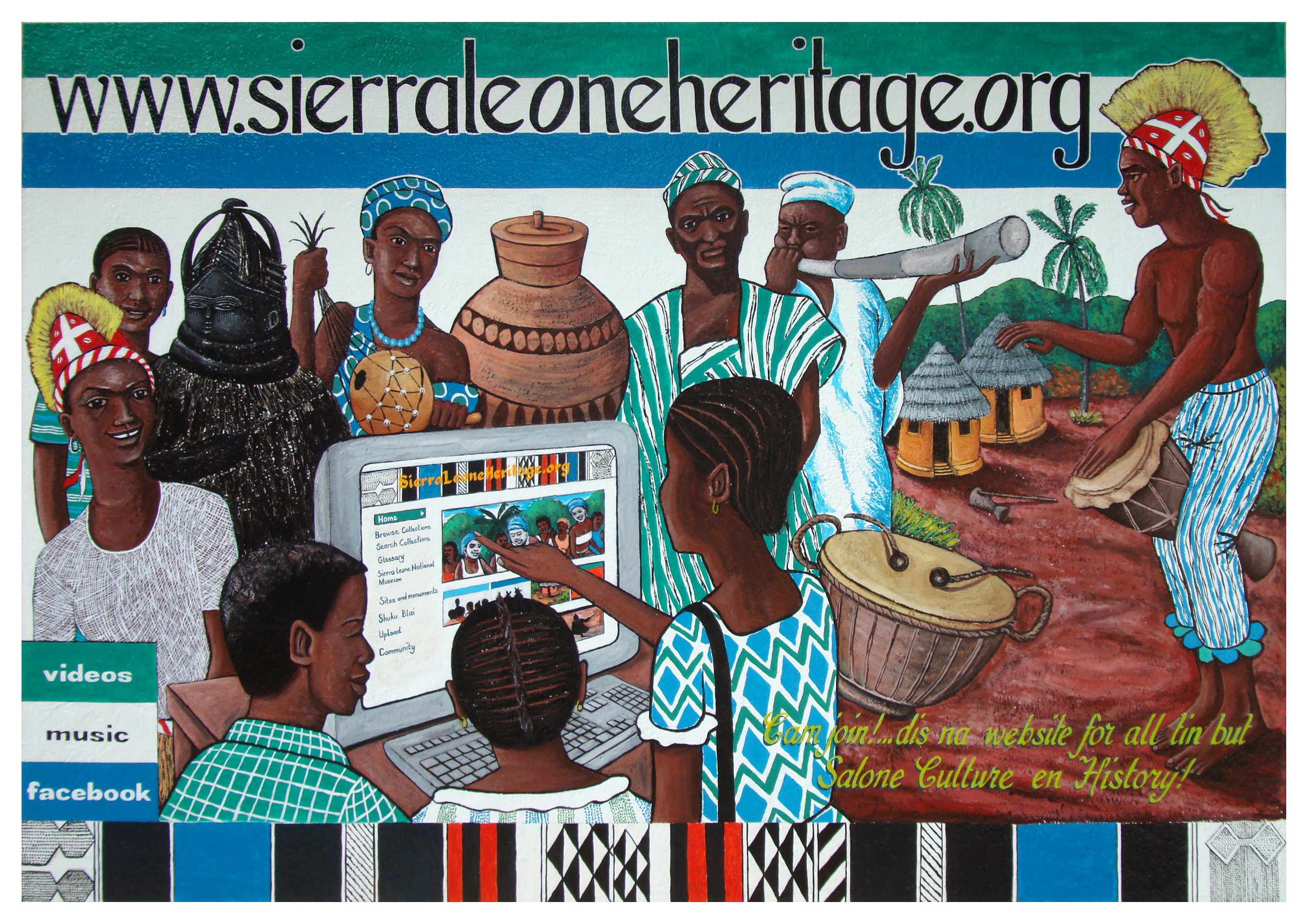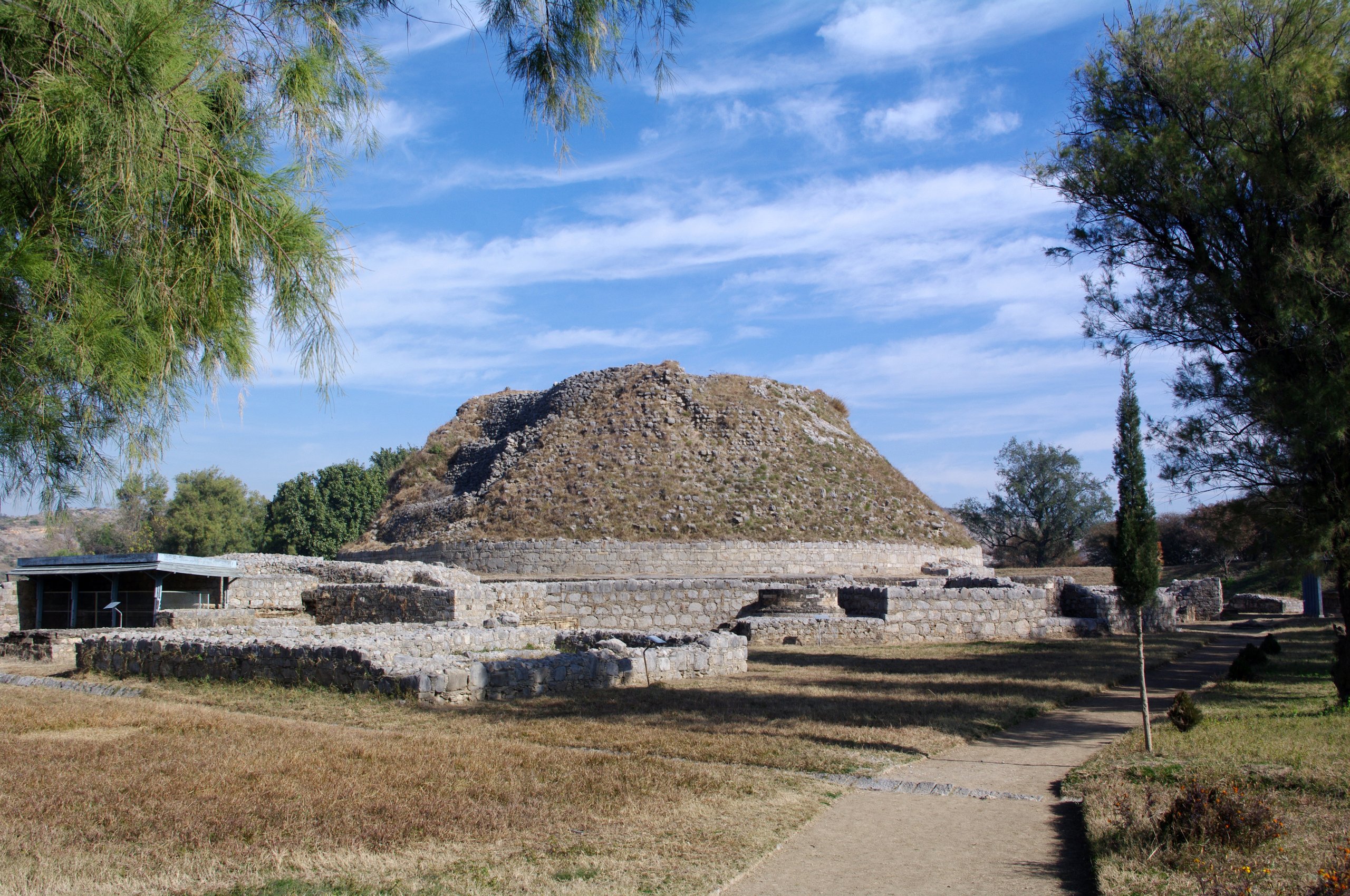Series: Heritage and Our Sustainable Future
Issue 5 ; 7th October 2021
Brief reports are released throughout the year. Check out the complete* series below!
*subject to release date
ISSN 2752-7026
01
1Digital technologies can provide new ways to document, preserve and interpret different forms of heritage, and to transmit them to current and future generations.
Digital modelling, laser scanning, immersive and augmented reality, mobile apps, virtual platforms, exhibitions and site tours, for example, offer digital alternatives to physical heritage conservation, interpretation and enjoyment, particularly in contexts where heritage is at risk of disappearance or has already been damaged by conflict, climate change, disasters and/or other harmful events.
2Digital technologies can empower people, facilitate collaboration, and amplify marginalised voices, but also enhance global disparities and generate negative environmental impacts.
Digital technology and approaches can be used to support public and open access to heritage, build bridges across countries and communities, and connect different publics to and through heritage. Nevertheless, digital technologies can also increase economic disparities and social exclusion and have unanticipatedly harmful impacts on the environment.

02
1Digital technologies can provide new ways to document, preserve and interpret different forms of heritage, and to transmit them to current and future generations.
Promote digital technology and interdisciplinary research to document, record, reconstruct, display, interpret and preserve both tangible and intangible heritage before it is irreversibly damaged, fragmented, destroyed or lost.
Create digital resources to bridge time and space by assembling and digitising fragmented and dispersed heritage.
Use innovation, creativity and digital technology to increase access to heritage, enhance experience, connect different audiences and deliver quality education and training, bringing heritage to life through digital media and artistic means, e.g. filmmaking and photography.
Use immersive reality, virtual exhibitions, and site tours to broaden the tourism experience, provide tailored and interactive visits, engage viewers emotionally, and make heritage available to different kinds of audiences who would not normally have access to it.
Support museums and heritage sites to take advantage of digital technology to increase their visitors and virtual outreach beyond local limits, especially in hard-to-access locations. Find a balance between virtual and in-person visitors to reduce carbon footprint and site degradation.
Ensure the long-term continuity of digital heritage and its active preservation and transmission across generations through adequate resource allocation, management, cataloguing, storage, maintenance, and display.
2Digital technologies can empower people, facilitate collaboration, and amplify marginalised voices, but also enhance global disparities and generate negative environmental impacts.
Use digital technologies wisely, promoting bottom-up and participatory heritage approaches to empower people and better inform decision making processes and practical actions.
Encourage collaboration and partnerships between different stakeholders to promote solidarity, cultural respect, heritage best practices and case studies through digital technology.
Develop and use advanced virtual heritage technologies and applications to engage and connect with local communities, record their tangible and intangible heritage, and promote inclusive approaches to heritage preservation.
Consider and bridge digital inequalities when developing heritage projects. Develop creative and collaborative digital and non-digital solutions to overcome the limitations in accessing and using high-tech and low-tech means by certain categories of people.
Encourage knowledge sharing and cross-cultural exchange through digital media and platforms to connect people with heritage, decolonise heritage practices, and increase heritage awareness and learning.
Ensure that attention is paid to the ethical dimension of digital heritage through education of different stakeholders (from governmental authorities to general users), provision of adequate management frameworks and regulation measures for copyright, data protection, ownership, accessibility, and the use of digital technology in general.
Mitigate the potential harms deriving from the use of digital technology in terms of social exclusion, environmental pressures, and economic disparities through more interdisciplinary, sustainable and cross-sectoral approaches to serve the interests of heritage for everybody.

03
The widespread availability of digital technology contributes to increasing global disparities, which are further exacerbated by the outbreak of the COVID-19 pandemic.
Access to heritage and to digital technology, internet, electricity and other essential infrastructure is still not equal, leaving further behind those who are poorest and most marginalised.
Digital technologies are currently produced and used unsustainably and have massive impacts on environmental resources, particularly in terms of physical waste, material supply, and electricity consumption.
Despite digital inequalities, people are resourceful and creative, making use of what technologies they can access.
Technologies mean different things to different people, and can be used in multiple ways according to different perceptions. Young people are generally considered to be ‘early adopters’ of digital innovations and mobile technology.
Digital materials are frequently short-lived and hence require a continuous process of production and reproduction as well as proper maintenance, management, and data storage.
DIGITAL INEQUALITIES
UNEQUAL ACCESS TO HERITAGE
POWER IMBALANCES IN DEFINING HERITAGE NARRATIVES
DATA OWNERSHIP AND DIGITAL ETHICS
LACK OF ADEQUATE INFRASTRUCTURE AND ELECTRICITY
ENVIRONMENTAL PRESSURE AND SUSTAINABILITY ISSUES

04
Iconic heritage is globally threatened by conflict, instability, climate change, rampant commercialisation, overexploitation by tourism, significant disinvestment, and lack of responsible planning, maintenance and preservation strategies. In this context, digital tools and innovative technologies can play a central role to either save ancient heritage sites, record existing at-risk heritage collections and artefacts, or help recover disappearing and fragmented heritage practices. At the Centre for Architecture Urbanism and Global Heritage (CAUGH) at Nottingham Trent University, we worked with heritage authorities, local communities and stakeholders in India and the MENA region to develop customised solutions using innovative virtual technology. Our ‘HeritageCAVE’ framework consists in a co-production and community-led preservation tool, which utilises novel virtual heritage technologies on three levels: recording archaeological sites, tracing historic lives and archives, and recording community’s history and stories. From determining geological and mapping physical defects in Ancient Hawara Pyramid (Egypt), recording historic layers of Nottingham Castle and the Lace Market in Nottingham (UK), to digitising communities’ heritage in old Mosul and Al-Rasheed Street in Baghdad (Iraq), or the historic villages in Gujarat (India), virtual heritage technology was able to reach in-depth understanding of heritage contexts, complexity, interdependences between assets and people. Encompassing technical procedures, communities engagement, and policy advocacy aspects, the project helped build capacity and create opportunities for largely marginalised communities in need of sustainable livelihoods and alternative economy.
Prof Mohamed Gamal Abdelmonem, Chair in Architecture and Director of Centre for Architecture, Urbanism and Global Heritage, Nottingham Trent University (UK).
In 2009, when the Reanimating Cultural Heritage project began, Sierra Leone was still recovering from a decade-long civil war. Culture and heritage were low priorities for the national government, and Sierra Leone’s National Museum had suffered from years of neglect. In contrast, many museums in the UK had rich collections and displays of Sierra Leonean cultural heritage. The AHRC-funded Reanimating Cultural Heritage project, led by Paul Basu, sought to reconnect this diaspora of Sierra Leonean heritage collections, as well as the institutions that cared for them, with the National Museum in Freetown. At the heart of the project was a programme of knowledge exchange and capacity building, enabling the National Museum to digitize its collection, overhaul its displays and develop new community and education programmes. Short video documentaries were produced with aspiring young filmmakers, bringing to life what were perceived as dead and dusty objects in the museum. The project sought to explore how breathing new life into heritage collections could revivify institutions such as the National Museum, and how these cultural institutions could, in turn, contribute to the wider post-conflict reanimation of Sierra Leone. Mindful of inequalities in digital access, the project worked both online and offline with communities throughout Sierra Leone and its diaspora. The Sierra Leone Heritage online resource was subsequently adopted as the official website of the National Museum. Through the School Heritage Club network the project helped to establish, many more young people are taking an active interest in their cultural inheritance.
Ms Isatu Smith, Managing Director, West Africa Heritage Consultants (Sierra Leone); Prof Paul Basu, Professor of Anthropology, SOAS University of London (UK)
Digital technologies have been used in many innovative ways in heritage work, from recording high resolution images of heritage, to modelling invisible structures, and making heritage accessible to new audiences. However, such activities give rise to many challenges: who benefits most from their use, how do we mitigate their harms, and are these technologies as sustainable as they are usually considered to be? Invariably it is the companies designing the technologies, academics building their careers, rich tourists wanting a tech-mediated augmented reality experience, and tourist agencies and companies mining the data who benefit most, rather than the world’s poorest and most marginalised people and communities who have long lived alongside much rich heritage. The research actions of the UNESCO Chair in ICT4D are largely focused on understanding and changing policy on how best such potential harms can be mitigated, as we seek to serve the interests of those who are usually ignored. In particular our Digital-Environment System Coalition (DESC) launched in 2021 brings together scientists, companies and civil society organisations to think afresh about how more holistic approaches can be introduced to counter the often anti-sustainable practices of the digital tech sector that harm our global heritage.
Prof Tim Unwin, Chairholder, UNESCO Chair in ICT4D, Royal Holloway, University of London (UK).

UK National Commission for UNESCO
[email protected]
Prof Stuart Taberner, Director of the Frontiers Institute, and Principal Investigator at PRAXIS, University of Leeds, UK
Dr Francesca Giliberto, Post-Doctoral Research Fellow on Heritage for Global Challenges at PRAXIS, University of Leeds, UK.
Helen Maclagan OBE, Former Vice-Chair and Non-Executive Director, UK National Commission for UNESCO; Dr Esther Dusabe-Richards, Post-Doctoral Research Fellow at PRAXIS, University of Leeds, UK.
Matilda Clark, Project Officer, UK National Commission for UNESCO; Matthew Rabagliati, Head of Policy, Research and Communications, UK National Commission for UNESCO.
Prof Mohamed Gamal Abdelmonem, Chair in Architecture and Director of Centre for Architecture, Urbanism and Global Heritage, Nottingham Trent University (UK); Prof Paul Basu, Professor of Anthropology, SOAS University of London (UK), and Ms Isatu Smith, Managing Director, West Africa Heritage Consultants (Sierra Leone); Prof Tim Unwin, Chairholder, UNESCO Chair in ICT4D, Royal Holloway, University of London (UK).
